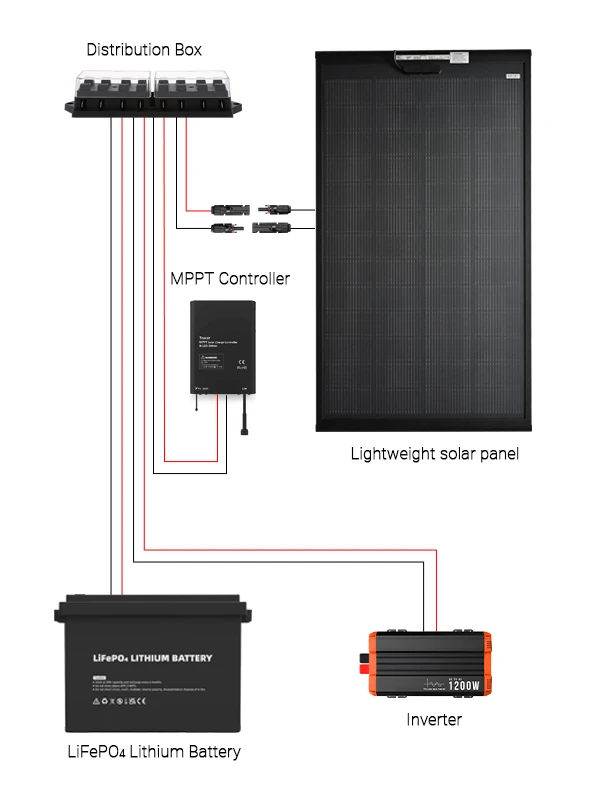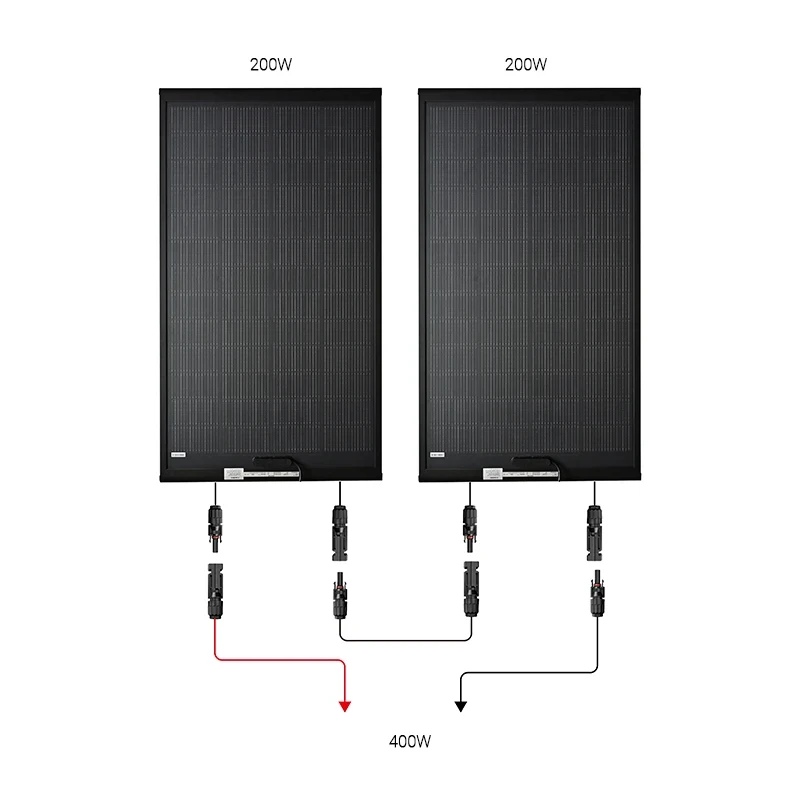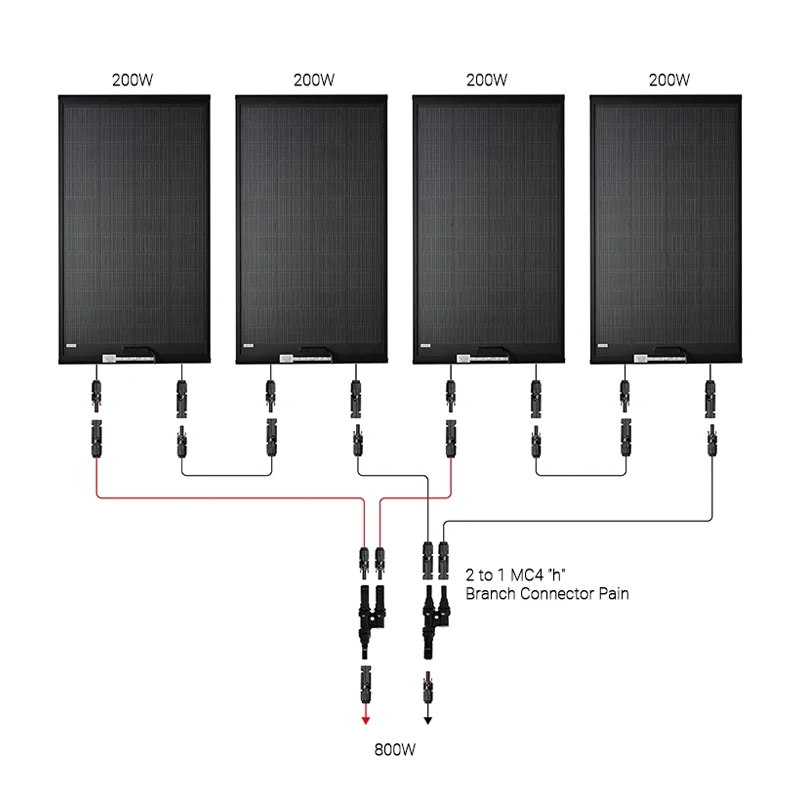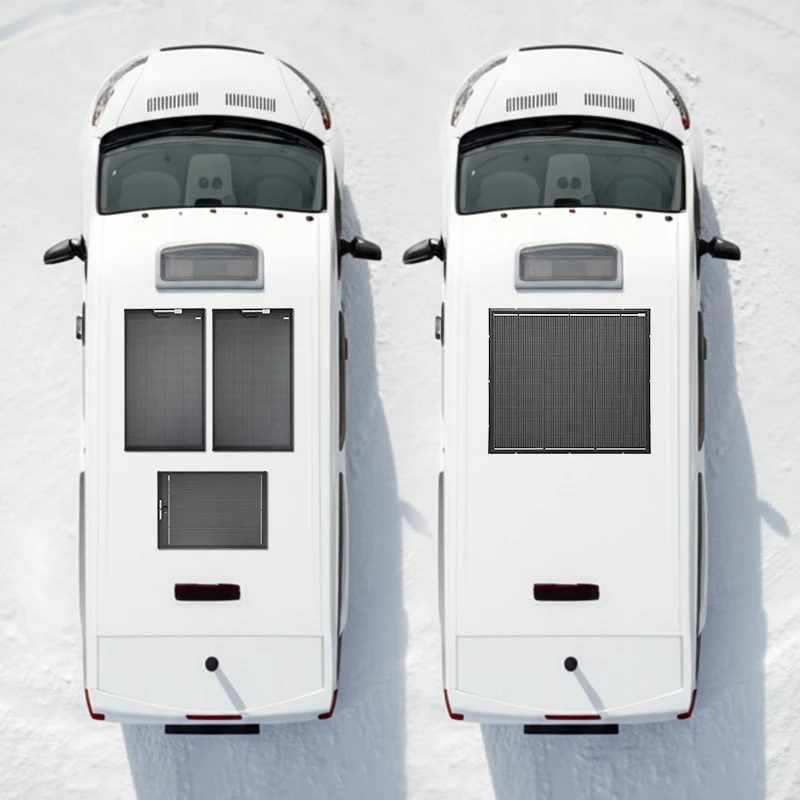RV Solar Panel Wiring Guide 2025
Off-Grid, Extra Low Voltage Solar Panel Wiring Guide
Introduction
To maximize the efficiency and lifespan of your new solar panels, it is essential to carefully follow the instructions in this guide. Failure to do so can shorten the lifespan of the panels and void your warranty.
Although connecting solar panels to a battery may seem simple, common installation practices, such as using non-waterproof connectors for permanent connections, can damage the solar panels and void the warranty. Continue reading this guide for more details.
Installers are responsible for ensuring the installation complies with local standards and follows the manufacturer’s instructions. This guide is applicable only to 12V and 24V battery systems.
Safety Guidelines
01
All work should be performed in a shaded area or indoors to avoid direct sunlight.
02
Use a towel or blanket to cover the panels to reduce exposure to sunlight.
03
Be cautious when working at heights. Ensure the use of a stable and safe ladder.
04
Use gloves and other personal protective equipment when necessary.
05
Use insulated tools during installation.
06
Always cover the panels during installation.
07
Wear appropriate footwear.
08
Seek assistance when needed.
This guide applies only to solar panels with an open-circuit voltage (Voc) rating, and the installed voltage should not exceed 120V DC.
PA621-200W Voltage and Current Parameters
Maximum Power Voltage (Vmp): 32.5V
Open-Circuit Voltage (Voc): 38.0V

Due to the high voltage characteristics of PA621-200W, ensure the voltage does not exceed 120V DC when connecting panels in series. Professional installation is required if exceeding this voltage.
When wiring in series, it is not recommended to exceed 3 panels (114V), especially in RV systems. Parallel wiring is the preferred method.
Caution: Low-voltage solar arrays, if not properly protected, can cause fire hazards and/or injury. Do not short-circuit solar panels (i.e., MC4 connectors should not be connected together and exposed to sunlight), as this may lead to bypass diode failure, hotspot formation, and permanent damage to the panels within minutes.
Selecting the Right Solar Panels Based on Specifications
The power of a solar panel is calculated by multiplying the maximum power voltage (Vmp) by the maximum power current (Imp), for example:
10.2A × 19.8V = 202W = 202W
When no power is being generated, the open-circuit voltage (Voc) will appear.
For charging 12V battery banks, depending on the charge controller, the absorption voltage of the battery needs to be about 7V higher than the solar panel’s open-circuit voltage (Voc). For example, a 12V calcium battery requiring an absorption voltage of 14.8V will need a solar panel with at least 21.8Voc.
Most solar panels have an open-circuit voltage around 23Voc. To calculate the array current, use the short-circuit current (Isc).

Series, Parallel, and Combined Wiring Methods
When using multiple solar panels, each panel can be connected to a separate solar charge controller, which usually provides the best performance but is more expensive and complex. Alternatively, the panels can be wired in series, parallel, or a combination of both.
Series, Parallel, and Combined Wiring Methods
When using multiple solar panels, each panel can be connected to a separate solar charge controller, which usually provides the best performance but is more expensive and complex. Alternatively, the panels can be wired in series, parallel, or a combination of both.
Installation Type 1: Parallel Wiring
This method is commonly used in off-grid 12V systems, where the positive terminals of each panel are connected together, and the negative terminals are also connected. In this case, the array voltage remains the same as a single solar panel, but the current will increase. This setup is suitable for most off-grid 12V systems, with the advantage of constant voltage and increased current.
If a solar panel fails due to an internal fault (e.g., a short-circuited bypass diode), all faulty current from the array will flow through the failed diode. This situation has led to many cases of fires, and the fuse string is designed to minimize this risk.
If two or fewer solar panels are used, no fuse is required because the fuse will not reach the necessary tripping current.

Installation Type 2: Series Wiring
In this common 24V system, the positive terminal of one solar panel is connected to the negative terminal of the adjacent panel. In this case, the array current remains the same as a single solar panel, but the array voltage will increase. Typically, a 24V system requires an open-circuit voltage of at least 36.6V.
The main advantage of series wiring is to reduce wiring costs and power loss in the cables. The performance of MPPT solar charge controllers is also typically enhanced.
However, the drawbacks include poor shading tolerance, the need for high voltage-rated solar controllers, and safety concerns.

Installation Type 3: Combined Series-Parallel Wiring
This method is typically used for large systems, where two or more solar panels are connected in series to form a string, and two or more strings are connected in parallel. In this case, both the array current and voltage will increase.

Parallel and Series Wiring of Different Solar Panels
Key Principles for Parallel Connection of Solar Panels
In general, solar panels of the same type and voltage can be wired in parallel. For example, two solar panels using P-type monocrystalline PERC cells with an open-circuit voltage of 24V can be connected in parallel. However, if a P-type monocrystalline PERC cell is connected in parallel with an N-type IBC cell, the different performance coefficients will cause voltage mismatches, lowering the higher voltage panel to the lower voltage panel, thus increasing the risk of panel failure. Always consult your dealer before connecting different types of solar panels in parallel.
- At the time of writing, PA621 series solar panels use identical cells (36 pieces cut), so the voltage and performance are nearly the same, providing good performance when connected in parallel.
- Solar panels can only be connected in series when the battery type and current are the same, which is quite rare. Therefore, typically only solar panels of the same brand and model can be connected in series.
- For example, two 200W Sungold fixed solar panels can be connected in series, and two 30W Sungold fixed solar panels can also be connected in series. Each series of solar panels can then be connected in parallel. However, 30W and 200W solar panels cannot be connected in series.
Solar Panel Efficiency
Solar panel efficiency refers to the amount of light energy converted into electrical energy per square meter of the solar cell. While the efficiency standards for solar panels are consistent, they take into account the entire panel, including the space between the cells and the frame. Therefore, reducing the space between the cells and the frame can increase solar panel efficiency. This is why larger solar panels tend to have higher efficiency than smaller ones due to a smaller ratio of frame/gap to cell area.


To ensure your solar panels perform optimally, follow these simple maintenance steps:
- Regularly clean the panels with mild soap and water using a soft sponge or cloth.
- If the panels are in a marine environment, rinse them regularly with fresh water to avoid damage from sea salt.
- Periodically inspect mechanical and electrical connections.
- Use denatured alcohol (industrial alcohol) to remove grease or other contaminants.
Continuous Support
Sungold is honored to offer you after-sales support beyond the sale of solar panels. If you need any technical assistance, please feel free to contact us. We are happy to assist you!

Next Steps
- I will now prepare the Word document with this content formatted for page layout, following your specifications.
- The document will include appropriate headings and sections for easy design and page flow.
Please hold on for the document, which I will make available for download shortly.

